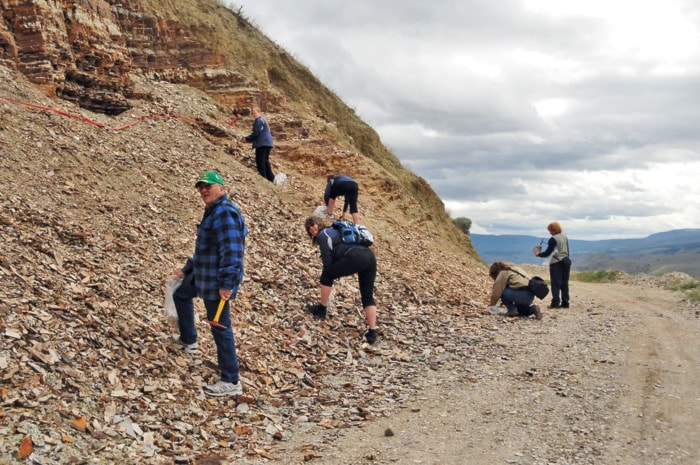VICTORIA - The Province announcing last week that it will formally recognize the McAbee fossil beds east of Cache Creek as a Heritage Site.
The McAbee beds are known worldwide for their incredible abundance, diversity and quality of fossils. The beds are unique for their exceptionally preserved fossils from the Eocene epoch (56 to 34 million years ago). Many fossils being discovered there are entirely new to science.
The beds, however, are privately owned and fossils from the site have been sold to private collectors as well as the general public, who are invited to dig for their own fossils.
Fossils in B.C. are protected through the Fossil Management Framework, which outlines the policy, procedures and guidelines for fossil collection, use and reporting.
In October 2008, a voluntary Memorandum of Understanding was negotiated with the owners to accommodate scientific interests in the fossils while allowing ongoing commercial activities. The agreement has not proved sufficient for resolving long-term protection of the fossils at the site.
Last week’s decision will provide a much stronger protection and management regime of this important resource, situated on what was once the shore of an ancient lake, said Steve Thomson, Minister of Forests, Lands and Natural Resource Operations. That ideal environment has left behind a fossil record that includes a variety of leaves, twigs, cones, nuts, flowers, pollen and spores, as well as insects, fish, crayfish and even a bird and feathers.
“B.C.’s McAbee fossil beds contain diverse and exquisitely preserved plant and animal fossils that are changing our understanding of life in the Eocene epoch,” said Dr. Richard Hebda, curator of botany and earth history, Royal BC Museum. “The designation of the beds as a Provincial Heritage site will ensure that the world will learn more from these remarkable fossils for decades to come as British Columbians assume their vital stewardship role of this globally exceptional natural heritage.”
Formal notifications are going out to local government, stakeholders and First Nations within whose traditional territory the land to be designated lies. Formal notification is required under the Heritage Conservation Act, before the site can be legally designated. Feedback from the notification process will also help inform future management plans for the site.
